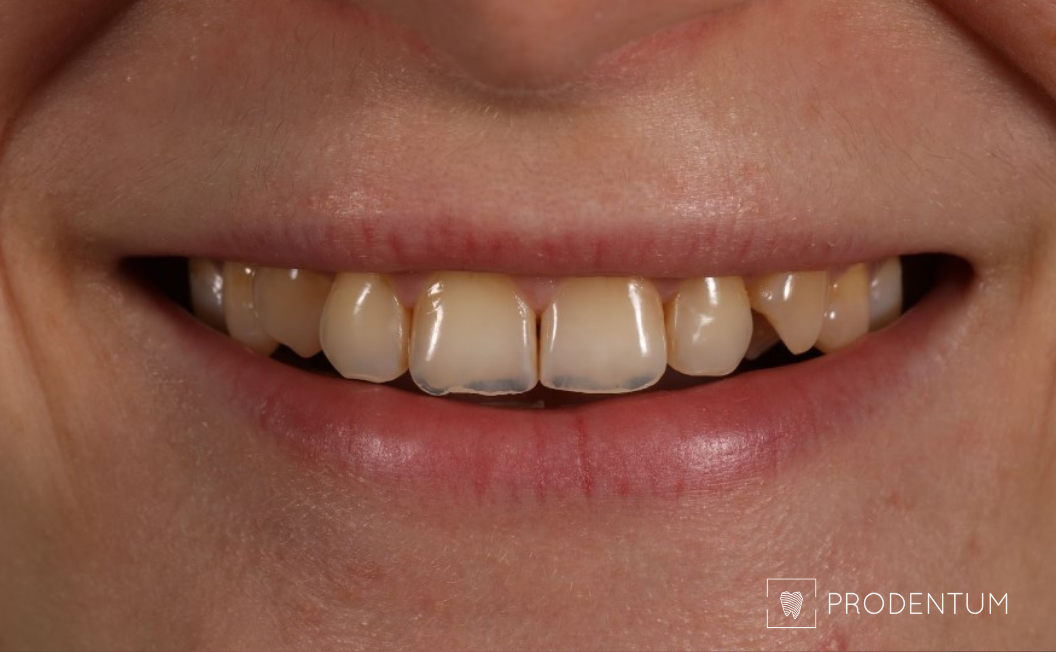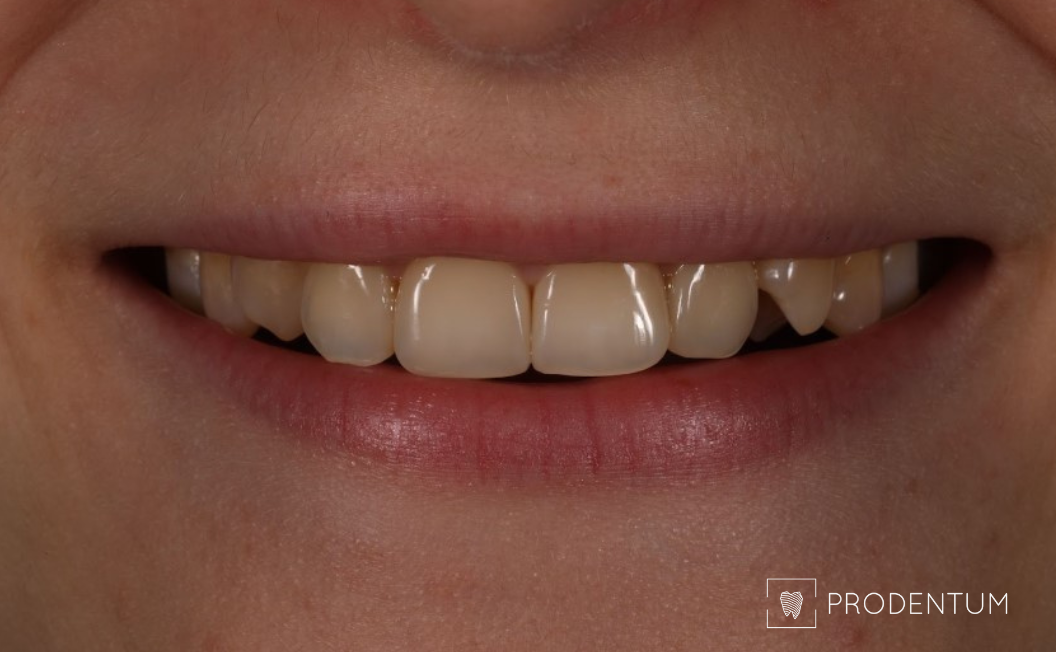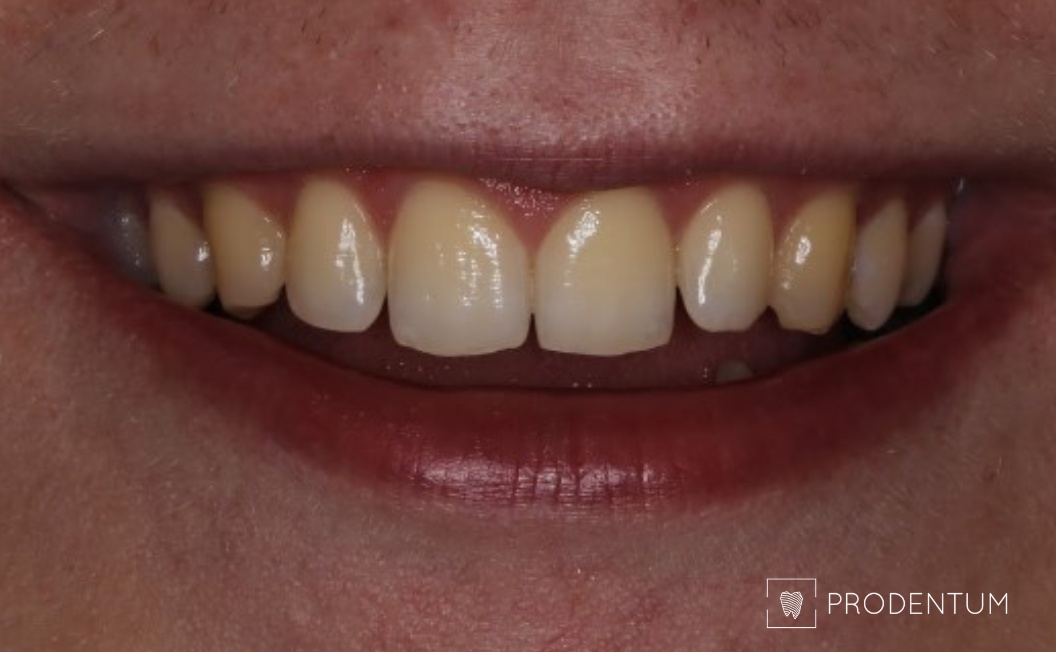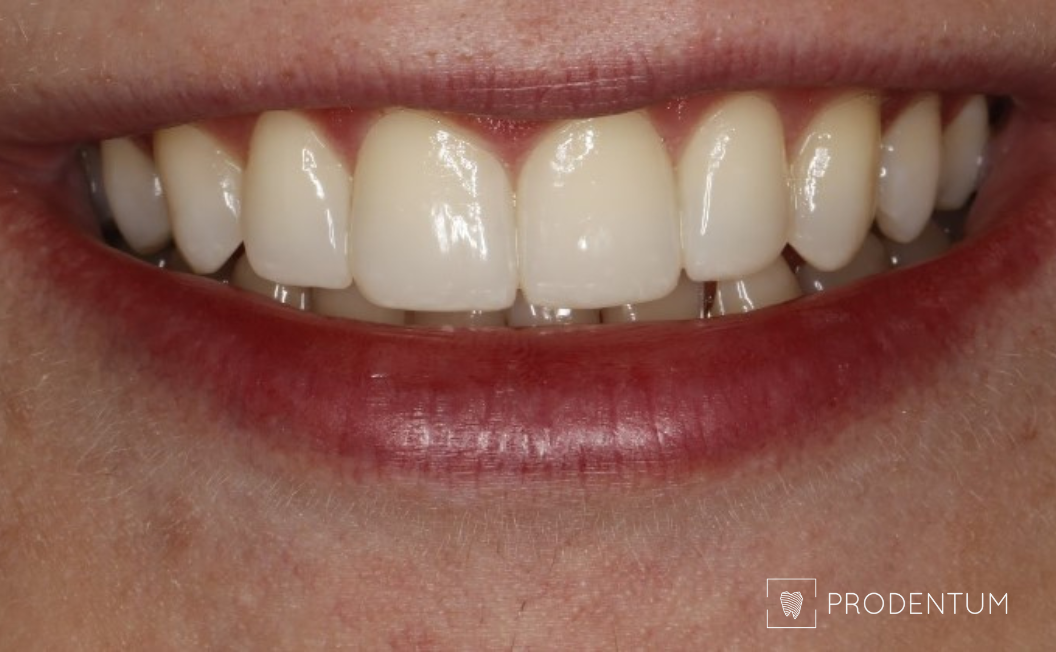
Treatment of worn teeth
Non-carious lesions, also called tooth wear, is another factor that influences the need for dental work.
Non-carious lesions, also called tooth wear, is another factor that influences the need for dental work. There are several types of such lesions:
- Attrition (tooth wear caused by tooth-to-tooth contact);
- Abrasion (tooth wear caused by chewing a foreign body);
- Erosion (tooth lesions due to acids);
- Abfraction (tooth lesions in the cervical area due to lateral forces).
Sadly, these lesions are becoming more common due to high levels of stress, heavy loads exerted on the teeth and exposure to acidic substances. Tooth wear not only compromises appearance, but may also cause tooth sensitivity to hot or cold, touch, increases the risk or tooth or restoration fractures. In these cases it is crucial to inform the patient about their condition and necessary preventive measures. If tooth wear exposes tooth dentin, tooth restoration using resin composites is usually advised. This method helps stop tooth wear and restores aesthetics.
Canine wear is the most importance to notice on time. During the side-to-side movement of the jaw, only the canines should touch and protect the back teeth from wear.
If teeth grinding or clenching is suspected, after prosthetic or direct restoration the patient received a night guard, which is worn every night.
In rare cases of severely worn teeth, only prosthetic may be suitable. In any case, after tooth wear treatment to recapture the lost vertical dimension and restore tooth anatomy, both the smile and the whole face looks more attractive.


Restoration of worn tooth edges using bonding


Restoration of worn tooth edges using bonding
Other recommended treatments
The ProDentum clinic has a wide range of services and provides patients with the highest level of professionalism.




